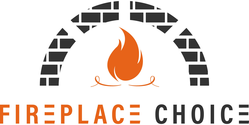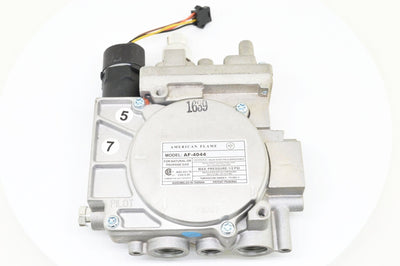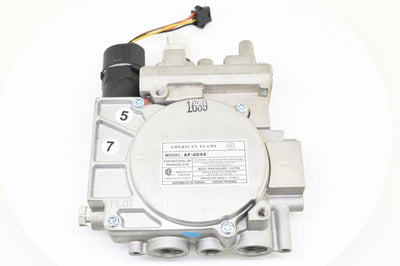Where Is The Best Place To Drill Through A Fireplace To Install Electric Wire For A Gas Insert?
Where Is The Best Place To Drill Through A Fireplace To Install Electric Wire For A Gas Insert

Are you trying to find the best place to drill through your fireplace to install electric wire for a gas insert? Many homeowners face this challenge when upgrading their fireplaces.
The ideal solution is often drilling through the wall behind the fireplace. In this guide, you'll learn safe and effective ways to complete this task without compromising safety. Keep reading!
Key Takeaways
- Drill Behind the Fireplace: The best place to drill is through the wall behind your fireplace, minimizing damage and ensuring safety.
- Use High-Temp Kits: Always use high-temp kits when running wires near heat sources like gas inserts to prevent potential hazards.
- Choose Proper Equipment: Select a masonry drill with a carbide-tipped bit for brick or stone materials. Make sure your tools include safety features like eye protection.
- Route Wires Safely: Plan to route wires through crawl spaces or away from high-temperature areas. Secure them properly using clamps or brackets for stability.
- Check Local Codes: Verify that all wiring and installation steps meet local electrical codes to ensure compliance and safety during the project.
Assessing the Installation Site
Check where to safely drill without damaging vital parts of the fireplace. Understand the structure to avoid hitting any gas or electric lines.
https://www.youtube.com/watch?v=esH9FFyaUho
Identifying the safest and most effective drilling point
Drill through the wall behind your fireplace to run electrical wires for a gas insert. This spot minimizes damage and ensures safety. By running the wire in the crawl space up to the nearest outlet, you achieve an efficient setup.
Use a high-temp kit when drilling through fireplaces to protect against heat.
Safety first: Always check local codes before drilling.
Considering the layout and structure of your fireplace
Fireplace designs vary, so evaluating the layout and structure is critical. Ensure your fireplace can safely house new wiring without causing damage or violating electrical codes. Fireplaces may have unique features such as hearth products that could impact where you drill.
Running the wire from a crawl space into an outlet involves extra planning and ensures safety.
Analyze whether any obstacles exist within or around the fireplace wall. Studs, brick, and insulation might affect your drilling point choices. Using high-temperature kits can help when running wires near heat sources like gas inserts.
Verify clearances for wiring to avoid potential issues with energy efficiency and safety standards related to fossil fuels or renewable fuels used in heating appliances.
Installation Steps
First, select the appropriate drill and bit for your fireplace material. Then, mark the drilling point clearly to ensure accuracy.
https://www.youtube.com/watch?v=eQStLI1xXeo
Selecting the appropriate drill and drill bit
Use a masonry drill for drilling through your fireplace's brick or stone. Equip it with a carbide-tipped masonry bit, which handles hard materials efficiently. Select the correct size of the drill bit based on the diameter of your wires and conduit.
Ensure you have a hammer function in your drill if going through tough surfaces like concrete. Always wear safety glasses to protect your eyes from flying debris. As one homeowner said,.
A good quality drill makes all the difference when working on masonry.
Marking the drilling point
Mark the drilling point behind the fireplace. This spot ensures wires run neatly through the crawl space up to the nearest outlet. Measure and mark a spot at least 5 feet away from electrical outlets to avoid interference.
Use a pencil or marker for precise marking. Ensure that your chosen location avoids studs and other obstructions in the wall structure. Select an area clear of wood-burning components to prevent potential hazards during installation steps.
Next, gather tools for careful drilling through this designated spot.
Carefully drilling through the designated spot
After marking the drilling point, begin with selecting a drill that matches the material of your fireplace. An electric drill with a masonry bit is ideal for brick or stone fireplaces.
Ensure you wear protective gear, such as safety goggles and gloves. Start drilling slowly to maintain control and prevent cracking.
Proceed with steady pressure, allowing the drill to do most of the work. Pause occasionally to clear out debris and ensure you're on track. Drill through both the interior and exterior walls if necessary, especially if running wire from an outlet in another room or crawl space behind the fireplace wall.
This precise method helps avoid hitting any gas lines or structural components hidden within your fireplace's layout.
Wiring Considerations
Ensure your chosen electrical wire can handle the power demands of the gas insert. Route the wire away from high-temperature areas to prevent damage.
https://www.youtube.com/watch?v=rvzVHjYYCzk
Choosing the right type of electrical wire
It is crucial to choose the right type of electrical wire for your gas insert. Use high-temperature resistant wires to handle the heat near the fireplace. Opt for wires with a higher gauge if you have long distances to cover or need more power.
Check that all wiring meets local electrical codes. Ensure proper insulation around wires and secure connections. Avoid running wiring too close to the gas insert’s components without protection.
For routing, consider using conduit pipes to protect against potential damage from heat or debris.
Routing the wire safely and efficiently
Choose a clear path to run the electrical wire through your fireplace for your gas insert. Avoid areas with high heat exposure. Opt to route the wiring behind the wall of the fireplace or through a crawl space.
This method keeps wires away from direct contact with fire.
Use a high-temperature kit for added safety when running wires near your gas insert. Securely fasten the cables using appropriate clamps or brackets to prevent them from moving around.
Make sure all work follows local electrical codes and consider seeking professional help if unsure about any steps in this process.
Final Setup
After drilling, seal the hole to keep out dirt and moisture. Then, install the gas insert securely in your fireplace.
Sealing and insulating the drilled hole
Sealing the drilled hole prevents drafts and keeps energy costs down. Use a high-temperature sealant to fill in gaps around the wire. This will keep out cold air and moisture.
Insulating around the hole is also crucial. Wrap fiberglass insulation or similar material around the area before securing it with a metal cover plate. This step ensures more efficient energy use, especially during cold months.
Installing the gas insert
Make sure the firebox fits properly in the fireplace opening. Slide it into place carefully to avoid damaging any components. Use a high-temp kit to run the wiring through the drilled hole and connect it to an electrical outlet about 5 feet away.
Ensure all connections are secure and meet electrical codes.
Cover the chimney with a plate to prevent drafts. Close and seal the damper tightly around the insert. Seal gaps with appropriate insulating materials to improve energy efficiency, minimizing issues related to heat loss or drafts from your wood-burning fireplace conversion process.
Explore Different Electric Fireplace Options
You have many choices when it comes to electric fireplaces. Each model offers unique features and benefits for your home.
Dimplex Electric Fireplaces offer an excellent alternative to traditional wood burning fireplaces. They provide the warmth and ambiance without the hassle of chopping wood or cleaning ashes.
With their sleek design, these fireplaces fit well in modern homes. You can choose from a variety of styles to match your decor. Dimplex uses cutting-edge technology to create realistic flame effects, making it hard to tell the difference from a real fire.
Energy efficiency is another key advantage of Dimplex Electric Fireplaces. They convert almost all their energy into heat, unlike wood burning stoves like the PE Alderlea T6 or Jotul F602, which lose some energy through smoke and soot.
This makes them a popular choice for eco-conscious homeowners looking to reduce their footprint while enjoying a cozy atmosphere.
Modern Flames Electric Fireplaces
Modern Flames Electric Fireplaces offer sleek designs and energy-efficient heating solutions. They feature advanced LED technology that mimics real flames, which adds a cozy ambiance to any room without the hassle of wood burning or gas issues.
These fireplaces come in various sizes and styles, making them perfect for modern homes.
Many homeowners appreciate the ease of installation and minimal maintenance required. You can also control these units with remote controls, adding convenience to comfort. Modern Flames models are ideal for those looking to combine style with functionality in their living spaces.
- Remii Electric Fireplaces
Remii Electric Fireplaces
Remii Electric Fireplaces offer a sleek and modern design perfect for any home. They provide efficient heating without the hassle of traditional wood burning. The flames look realistic, providing a cozy ambiance with minimal maintenance.
Remii models are energy-efficient, helping reduce energy issues often associated with conventional fireplaces.
These electric fireplaces come in various sizes to fit different spaces and preferences. Installation is straightforward, making them an excellent choice for those looking to upgrade their fireplace setup easily.
Remii products meet electrical codes and ensure safe operation, eliminating concerns about improper installation or wiring issues.
Simplifire Electric Fireplaces
Simplifire electric fireplaces offer a sleek and modern heating solution. They are easy to install and perfect for homes with existing fireplaces that need an update. Simplifire models usually come with multiple flame settings, creating a cozy ambiance without the hassle of traditional wood burning processes.
These units also provide remote control options, making it convenient to adjust heat levels and flames from anywhere in the room.
Many Simplifire electric fireplaces feature built-in thermostats to maintain desired temperatures easily. Some even integrate Bluetooth technology for effortless operation via smartphone apps.
Simplifire remains an efficient choice, reducing energy costs while enhancing home aesthetics with its realistic flame effects and customizable features.
Conclusion
Drill through the wall behind the fireplace. This spot offers safety and efficiency. Use a high-temp kit for wiring near heat sources. Choose electrical wire that meets code requirements.
Ensure you seal and insulate any drilled holes properly.
FAQs
1. What is the best place to drill through a fireplace for installing electric wire for a gas insert?
The best place to drill is usually at the back of the fireplace, near the bottom where it meets the floor.
2. Do I need special tools to drill through a fireplace?
Yes, you will need masonry bits and a power drill designed for tough materials like brick or stone.
3. Is it safe to install electric wires in my fireplace by myself?
It can be done safely if you follow all safety guidelines and turn off power before starting. However, hiring a professional ensures everything meets code requirements.
4. Can I use any type of wire for connecting my gas insert?
No, you should use heat-resistant electrical wiring that complies with local building codes for safety reasons.
← Older Post Newer Post →





















